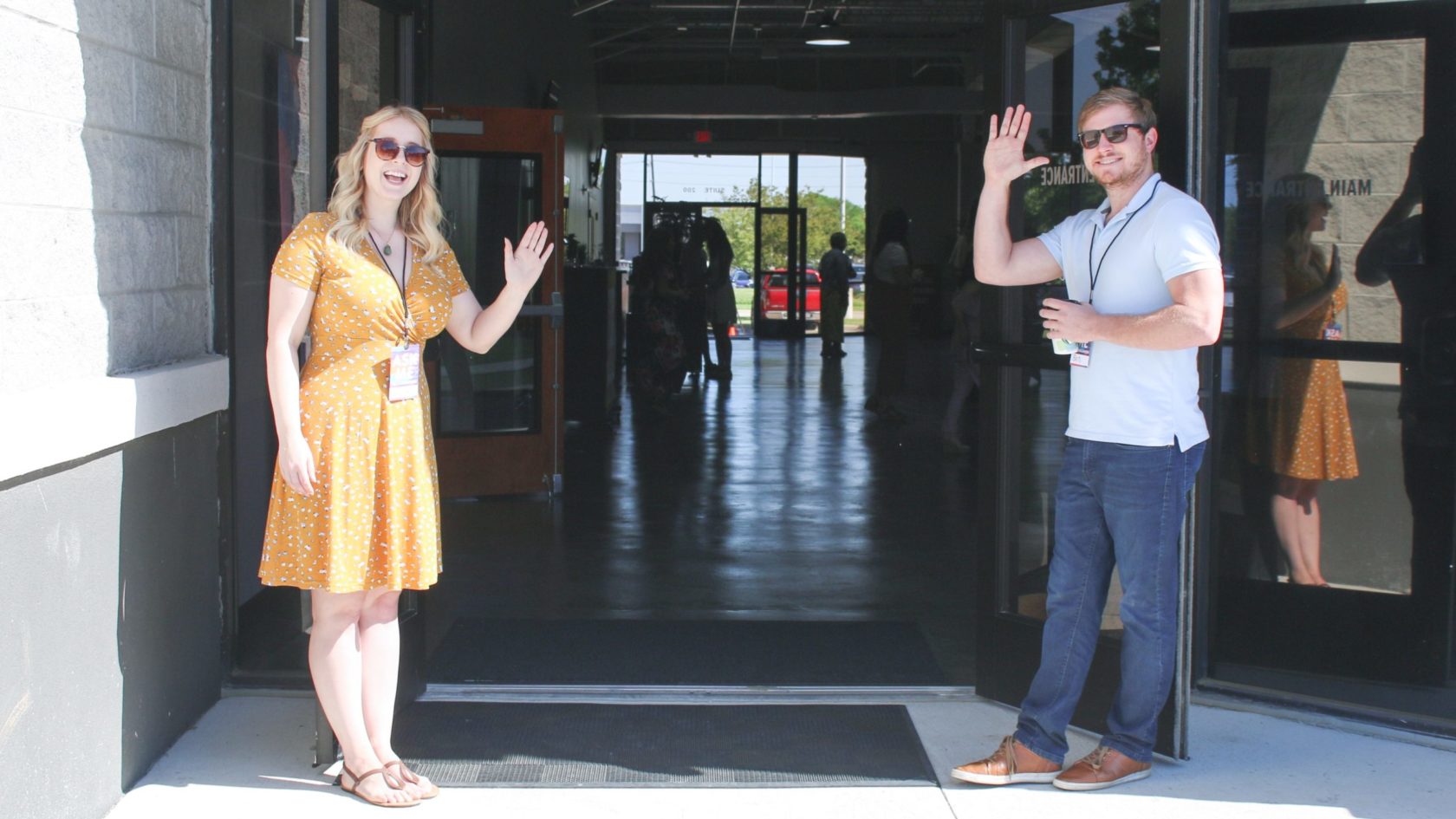This “First Baptist Church” renamed their church and inspired a new generation. Here’s how they did it.
Is now the time to rename your church?
If your church has existed for more than a couple of decades, you probably chose its name for an audience that no longer exists. Maybe it’s managed to stay fresh despite the changes in the culture. But do you ever wonder if you should rename your church so you can reach more people?
Bob Ingle is the lead pastor of Waypoint Church, a Southern Baptist congregation in the west suburbs of St. Louis. Launched as First Baptist Church of Harvester in 1963, by the time he accepted the position in 2009, he realized their name stood between them and their community.
He thought they should change their name.
But Bob was aware of the pitfalls — that renaming a church can cause difficult emotions, fear, and (worst case scenario) a split!
But he also knew this: Renaming your church can communicate a broader vision, include people who’ve felt excluded, and stir up excitement for the future.
It took nine years of work, but in the end, the congregation was fully on board.
Bob and his team inspire us. Here’s how they:
- Found out if their old name reflected their people’s heart for the future
- Got clarity on the church’s mission and vision
- Helped key leaders understand the “why” behind their need for a new name
- Communicated in a way that reflects the heart of their church
(FYI, we edited some of the quotes below for clarity and flow.)
And this is only part 1 of our interview. Make sure to check out Part 2, with Pastor Bob and Ryan’s full strategy, in How to Rename Your Church.
1 Consider Renaming Your Church When “the Past Is the Hero”
When Bob joined First Baptist Church of Harvester, he saw a healthy congregation that loved Jesus, gave generously, and enjoyed studying the Bible.
It had a weakness, though. He said the general feeling was: This is what we have always done. This is what we like.
But Bob said, “What I have learned is that, in any church, when the past is the hero, decline is inevitable.”
He recognized this was true at First Baptist Harvester, saying, “They were still holding on to what used to be.” Still, the congregation hadn’t noticed their subtle, but undeniable, decline in numbers.
But he didn’t jump into immediate change. He said, “It took me awhile to find out, ‘Why am I here?’ Because you don’t want to just come in and say, ‘This is what we’re going to do.’
Instead, Bob began asking four questions:
- What is the current vision?
- What do people love?
- What have we held on to that we shouldn’t?
- What has God called us to do?
He continued, “The pastor doesn’t bring a vision to the church. He comes to the church, and then, in the life of the ministry, God reveals what that vision is. It just takes time — and sometimes we don’t want to put in the time.”
2 Rename Your Church After Everyone Understands the Vision — Pastor Included
As Bob started to get an inkling of what God might be leading the church to do, he taught what the Bible says about unity.
“Nothing ever happens when we’re segmented and divided,” Bob said. “The mission of the army has to be the passion of each soldier.”
Next, he taught about the difference between mission and vision. For every church, he believes the mission will always be some wording around The Great Commission.
That will never change.
But a church’s vision statement relates to how an individual church chooses to carry out its mission right now.
To settle on a vision statement, Bob said he first had to understand “who’s part of what God is doing. And then you can understand what the vision is — because you know it’s the people.”
Here’s the pitfall Waypoint avoided: Don’t practice the vision before you understand the people who are part of the vision.
3 Don’t Try to Rename Your Church Until You Communicate the “Why”
Bob joked, “I’ve always been in First Baptist churches. I’m Baptist born, Baptist bred, and when I die, I’ll be Baptist dead.”
But he knew they would need to remove the word “Baptist” from the church’s name starting the moment he arrived in 2009 “because of the direction of our culture.” (More on this later.)
Yet, he was aware that pushing for a name change too early could cause him to lose his job or incite a church split.
After spending years teaching on unity and vision, here’s how he began to suggest they change the name.
Start with the Staff
He started by getting his staff on board, then soliciting their help.
He said, “I wanted the staff to understand the ‘why’ first. People will ask them questions who would never come to me — so we better have essentially the same answers.”
Second, Speak with Your Senior Lay Leadership
Next, Bob went to the Church Council (what they used to call their Board of Elders) and laid everything out for them.
He said it was hard for them to accept a name change at first. But they understood it as they dove into the “why” he had already established with his staff.
And for First Baptist Harvester, in particular, they all knew they had to overcome a “denominational disconnect.”
Here’s what that means.
4 Rename Your Church When the Name Turns People Away
Does the Name of Your Denomination Come with Baggage?
Bob said, “If you’re immersed in Baptist life and culture, you have no idea that ‘real people’ couldn’t care less about your denomination.” In his view, denominational names come with cultural baggage that can keep people out of church and away from Jesus.
Bob says the vast majority of people see the word “Baptist” and think, “I’m not Baptist, so I’m not invited.” The same could apply to any denomination.
Also, younger people didn’t feel especially connected to the word “Baptist.”
Ryan Weiss (their current Communication Director) started on their staff when he was only twenty-one. He said that, from the beginning, what excited him about the church was their vision for the future.
Bob wanted a name that communicated that vision.
Does It Matter that You’re the “First?”
The idea of being the First Baptist Church of Harvester no longer resonated with their congregation either. They couldn’t think of a good reason to communicate to those who had never experienced their church that “We got here first.”
What About Your Town’s Name?
The church’s vision, which by now everyone had bought in on, included being a multisite church. They realized the community name “Harvester” wouldn’t translate to other nearby towns.
The First Step toward Renaming Your Church
At Waypoint, Bob was able to bring the staff, the church elders, and ultimately the whole congregation together so they could rename their church. The reason was clear: The name change aligned with the church’s mission and vision.
Next week, we’ll share part two of our conversation with Waypoint Church — all the details about how they chose their name from ideation to going live.
(Spoiler: ArtSpeak got to be part of their rebranding and website!)
If you’re thinking about renaming your church — or even just renewing your vision — it starts with identifying who you are and who you want to reach. We’ve developed a questionnaire to set you on that path.
Download your free branding questionnaire here.
This article is part one of our interview with Pastor Bob Ingle.
To watch and read part two which is all about how to roll out your new name, click here.

